How do you plan a successful butterfly and pollinator garden?
With the increased awareness of pollinator decline, gardeners are asking that question alot lately.
Pollinators–bees, in particular–make two out of every three bites of food we eat possible, delivering billions of dollars of free ecosystem services to humanity each year. Without them, the foods we know and love would become less available and more expensive. As climate change, pesticide abuse, genetically modified crops and urban sprawl conspire to limit pollinator habitat world-wide, governments are worried about food security in the face of their demise.
That thinking drove the announcement of President Barack Obama’s National Pollinator Strategy last year. The 58-page document sets goals to reduce honey bee losses, increase the migrating Monarch butterfly population, and restore seven million acres of pollinator habitat over the next five years.
Large prairie restorations are already underway as funding and attention have focused on the IH-35 corridor, which serves as a major migration route for birds, insects and Monarchs. Every yard can also make a difference.
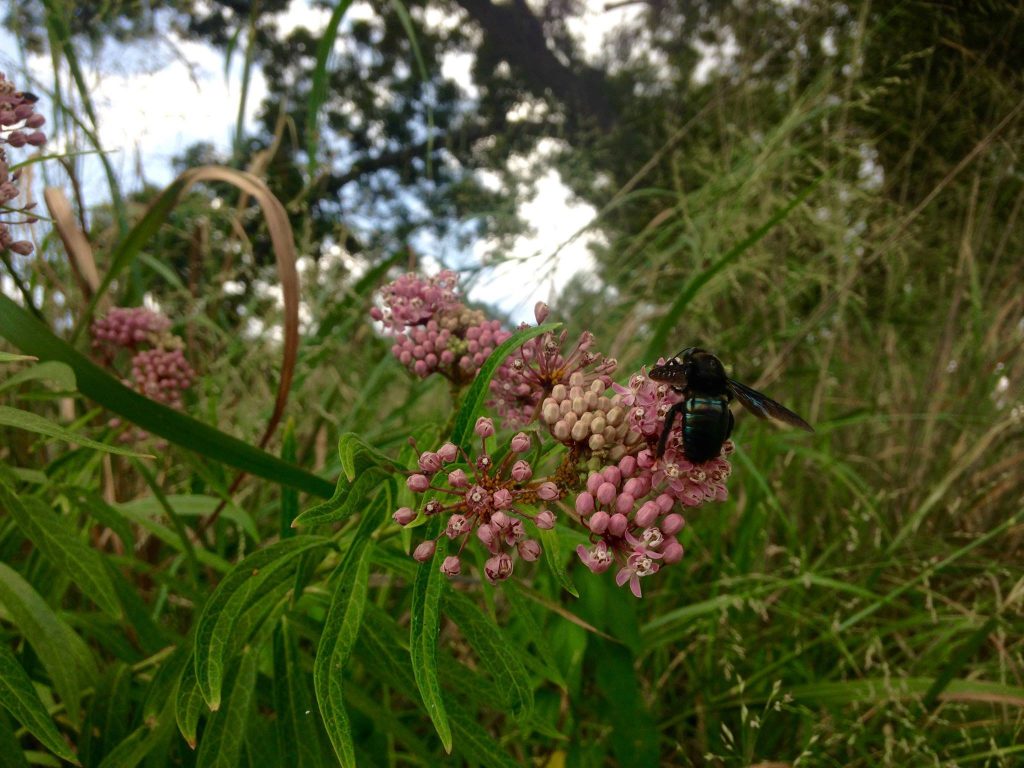
Everyone loves Swamp milkweed. Here, aphids and a glamorous blue bumblebee pour over the blooms. Photo by Monika Maeckle
In fact, an October 2015 study, An Evaluation of Butterfly Gardens for Restoring Habitat for the Monarch Butterfly, by Brian T. Cutting and Douglas W. Tallamy published in Environmental Entomology, a publication of the Entomological Society of America, demonstrated that Monarch butterflies are much more likely to lay their eggs in gardens than in natural sites–2.0 – 6.2 times more eggs per plant per observation. That suggests planting butterfly and pollinator gardens can make a significant contribution to restoring habitat for these special creatures that keep our food web intact.
How to do it? Here’s a few tips:
Ask: How will I use my garden?
Do you want a deck or patio as part of your pollinator garden? A fire pit? Rain garden? Do you prefer a path for observing pollinators in the their various stages as well as the fruits, flowers and herbs you might be growing? Or maybe you just want a pretty yarden with bees buzzing, hummingbirds lighting and butterflies lilting on your flowers?
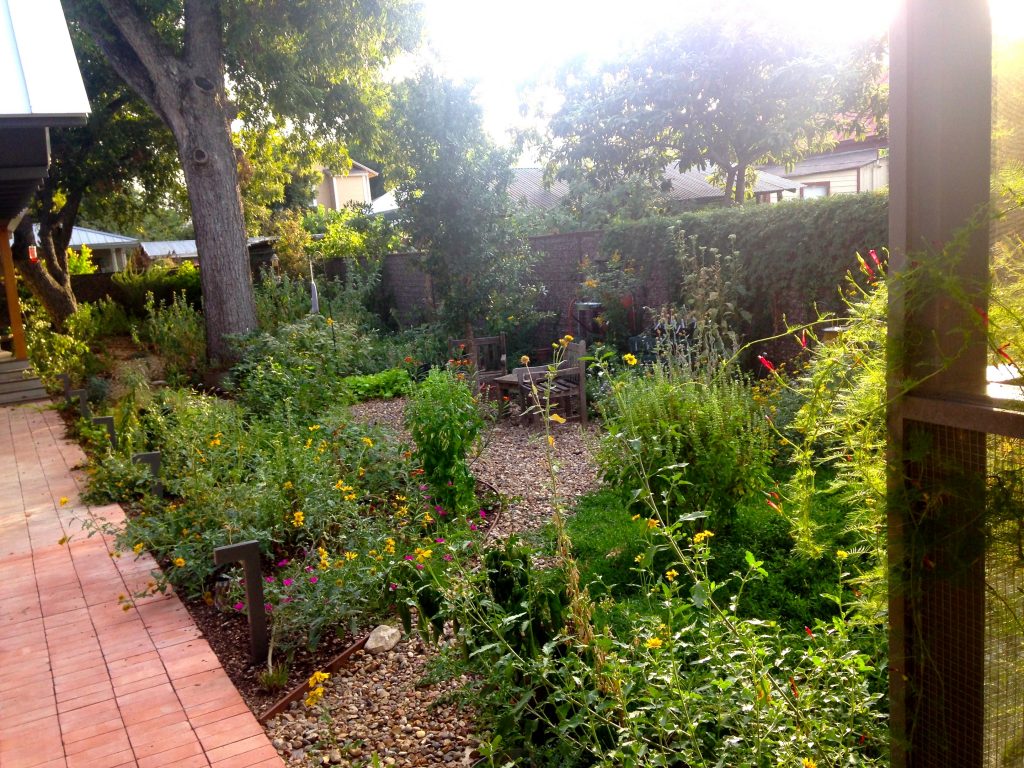
I like a path in my pollinator garden so I can check for caterpillars and eggs, pick some okra, or snip some herbs for dinner. Photo by Monika Maeckle
How you will use your garden will determine how to plan the space. Personally, I like to come home from work and walk through my garden in the late afternoon and early evening, inspecting my milkweeds and other host plants for eggs and caterpillars, checking on the okra or tomatoes and perhaps snipping some herbs for dinner. That’s why I’ve incorporated gravel and mulch paths that weave throughout the garden to allow access and close inspection, as well as close-up photography that you will often see in these webpages.
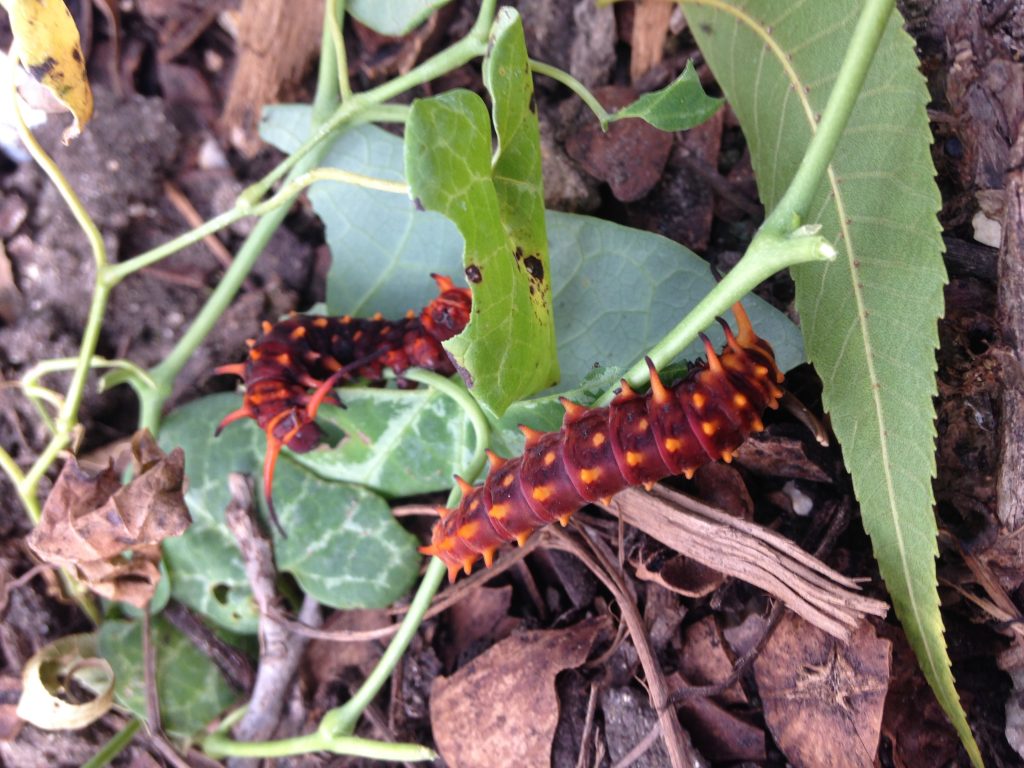
Pipevine swallowtail caterpillars on Dutchman’s Pipe. PHoto by Monika Maeckle
I understand that not everyone fancies that. Some folks want the focal point of their garden to be a barbecue zone or vegetable patch, or perhaps a hammock/reading area, a deck, a pond or rain garden. You decide. It’s your garden. Plants can be identified to serve any situation—wet, dry, sunny, shady. So choose.
And while you’re at it: choose native and well adapted plants.
I’m not a purist about native plants, but I do try to use them whenever possible. Why?
Because natives are four times more likely to attract pollinators than exotics. Makes sense, since the natives were born and raised here, thus the insects that interact with them are naturally predisposed to perform the valuable ecosystem services needed to be self-sustaining. According to Pollinators of Native Plants, a fantastic book by Heather N. Holm, studies find that when eight or more species of native plants occupy a
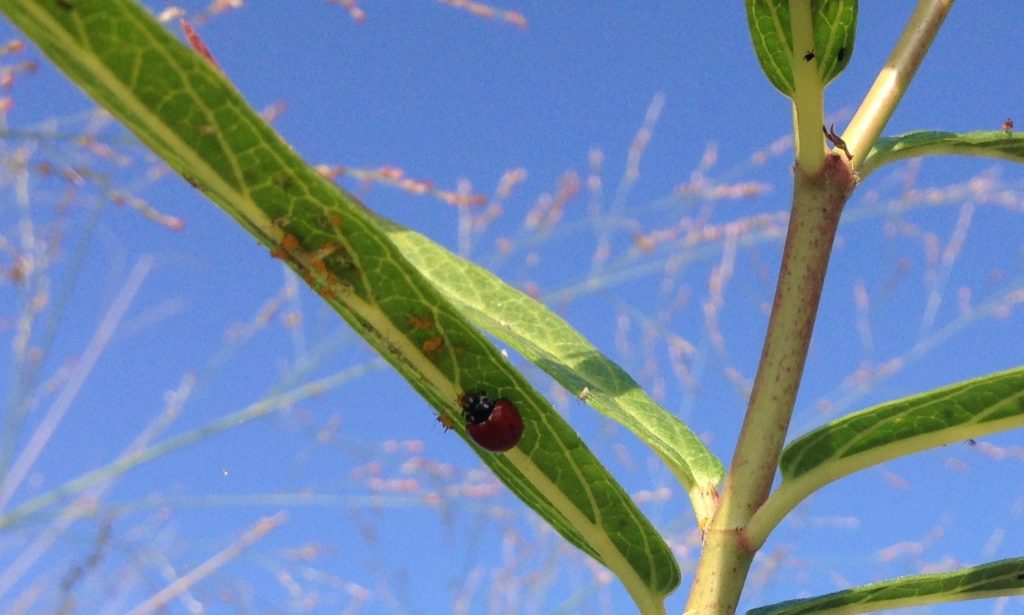
Lady bug on the job tackling aphids on Swamp milkweed. Photo by Monika Maeckle
landscape, the population and variety of native bees increase. Diverse native landscapes also support beneficial insects like lady bugs, who seemingly appear out of nowhere to combat the yellow aphids that gravitate to the milkweeds we all plant for Monarchs and other butterflies.
Choose nectar and host plants to draw your favorite butterflies.
Butterflies and moths feed mostly on nectar plants, their flowers providing a sugary fluid that fuels their flight and reproduction. As caterpillars, they consume the leaves of particular plants known as host plants. Bees, meanwhile, feed on a flower’s pollen (protein) and nectar (carbs). If you plant a variety of nectar and host plants, you should attract butterflies and bees to your yard. Most people focus on the flowers, failing to research and include host plants, but honestly host plants are the key to a successful butterfly garden.
For example, we all know that Monarch butterflies eat milkweed, anything in the Asclepias family. But did you know that Eastern Swallowtails, one of the most common and beautiful butterflies in our part of the world, eat plants in the carrot family, Apiaceae? That means if you plant parsley, fennel, dill or rue, you will soon have Eastern Swallowtails in your yard. They are magnificent caterpillars and dramatic, large flyers in the adult stage.
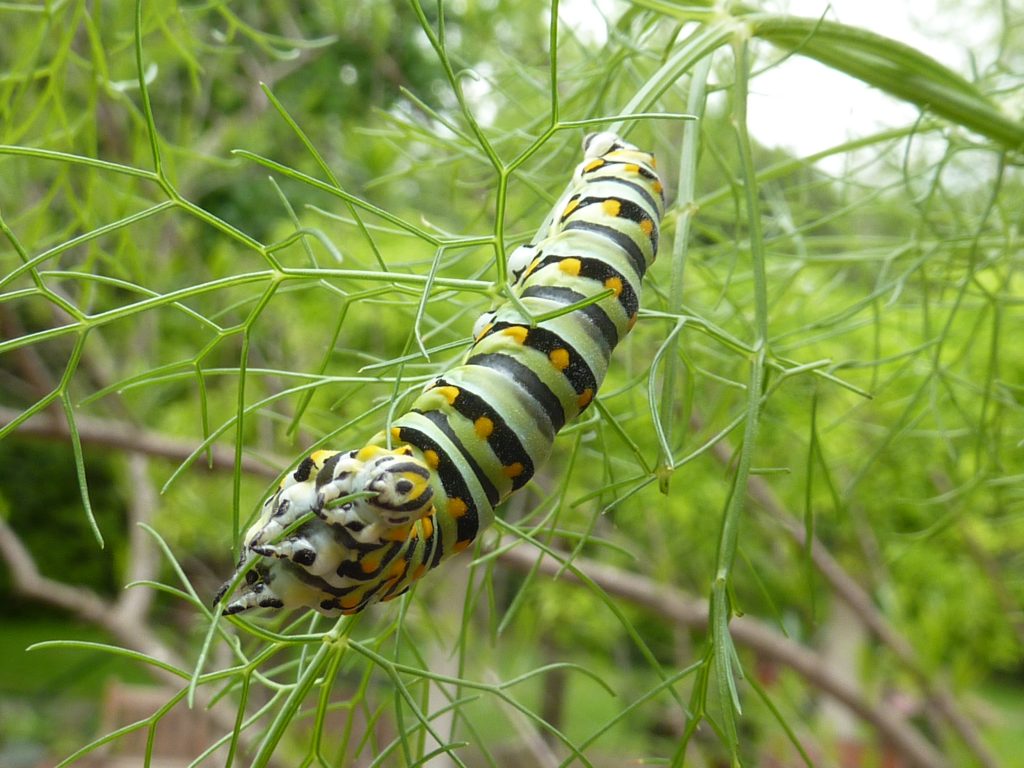
Eastern Swallowtails eat plants in the carrot family–parsley, fennel, dill and rue. Here, a Swallowtail noshing on fennel. Photo by Monika Maeckle
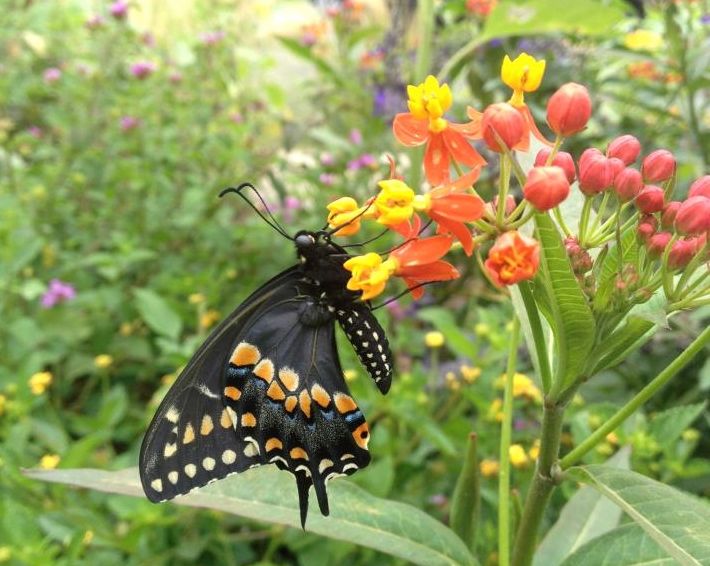
Eastern Swallowtails, like many butterflies, are less particular about their nectar sources. Here, Swallowtail nectaring on Tropical milkweed. Photo by Monika Maeckle
If you need help identifying appropriate native host and nectar plants that will attract the butterflies and other pollinators in your area, consult your local native plant society or Master Gardeners Chapter. Typically they offer lists of “butterfly garden” plants appropriate for your locale.
Right plant in the right place.
Ideally, you want a sunny location. Butterflies, bees and hummingbirds like flowers and flowers need sun–preferably six – eight hours per day. Determining the sun’s arc—that is, how the sun and shade play on your pollinator garden will determine where you place particular plants. Sunflowers, mistflowers, sages and asters must have sun to bloom; planting them under a tree or eave will only disappoint you–and the bees and butterflies, too.
Shade options include Columbine, Turk’s Cap, and certain Goldenrods as excellent pollinator plants. These and others thrive on the edge of a tree’s shade or in roofline’s shadow. Again, consult your local native plant society and Master Gardener chapters to see what’s right for your situation.
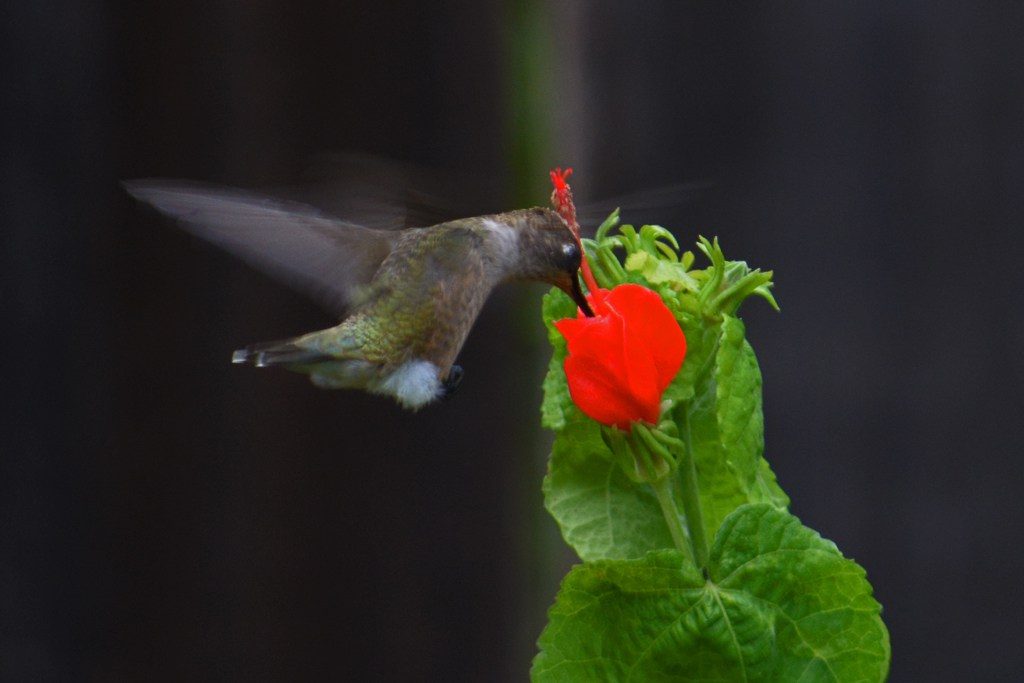
Hummingbirds love Turk’s Cap, which grows in shade. Photo via npsot.org
Meanwhile, ask yourself: what kind of soil do I have? Blackland prairie or rock-filled caliche? Loam, sand, silty? The soil is the foundation of the garden and some plants will only grow in particular circumstances with the requisite moisture and nutrients. You can do a simple soil test or simply observe a similar natural landscape and copy Mother Nature.
Avoid pesticides.
Butterflies, caterpillars, beetles, ants, wasps, hummingbirds and moths are sensitive creatures that readily absorb pesticides, which are poisons. When caterpillars, or butterflies-to-be as I like to call them, eat the leaves of plants sprayed with systemic pesticides, they perish. Systemic pesticides can linger in a plant for months.
In the photo below, a trusted nursery assured our friend Sharon Sander that they had not sprayed the milkweeds she sought with any pesticides. Sander bought several one-gallon milkweeds to feed her hungry Monarch caterpillars. The nursery employee was correct–they had NOT sprayed the plant. But the grower did. The systemic pesticide used remained in the milkweed leaves for months, killing all the caterpillars.

Boo-hoo! Dead Monarch caterpillars fall victim to pesticide laced milkweed. Photo by Sharon Sander
Seek out growers and nurseries that do not use systemic pesticides. And if you must use pesticides yourself, read and follow the directions carefully. Choose a still day, not when it’s windy, and avoid spraying if rain is in the forecast, since the poisons might wash off and run into streams or drains. Also, spray or apply surgically, ONLY to the plant that has issues, not some mass broadswipe.
For more on how to safely use pesticides in a pollinator garden, check out this helpful flyer from the Pollinator Partnership.
Create a puddling zone and wind break.
Butterflies need damp, wet areas to rehydrate and soak up minerals from the soil. A small swale or even a rain garden can satisfy this need and create a microhabitat within your garden that brings a new pollinator audience to your yard.
We installed a rain garden last year, planting its perimeter with various sedges, native grasses and Texas Frogfruit, Phyla nodiflora, a lovely semi-evergreen groundcover that thrives in extreme wet and dry conditions. A member of the verbena family,
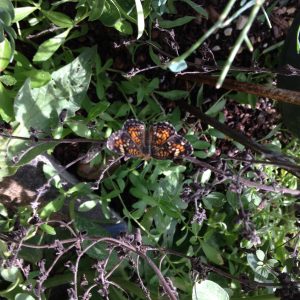
Phaeon crescentspot on frogfruit. Photo by Monika Maeckle
Frogfruit’s tiny white flowers serve as an excellent nectar source for various butterflies and as host plant to the Common Buckeye, Phaeon Crescentspot, and White Peacock butterflies.
Bushes, trees, and tall shrubbery also are necessary to provide pollinators a place to rest, roost and overnight. You can make these flowering plants if you like, but it’s not necessary. Monarchs roost every fall in pecan trees that offer no nectar or hosting, only protection from the wind and the elements.
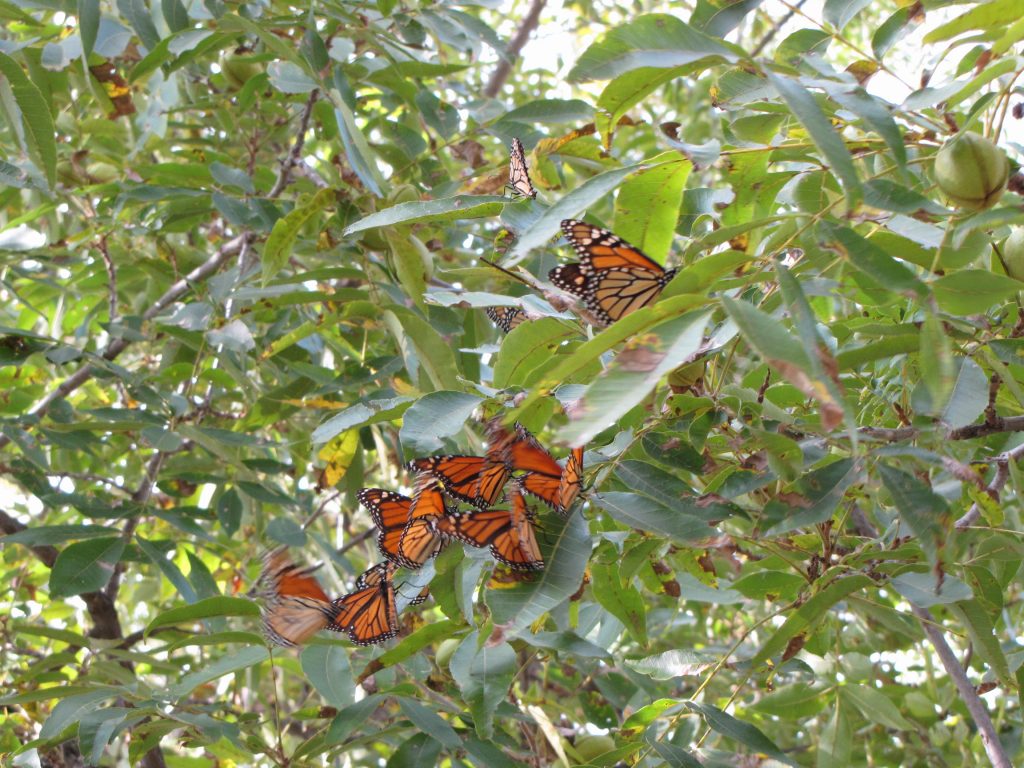
Monarch butterflies take a break from the wind by roosting and resting in pecan tress along the Llano River. Photo by Monika Maeckle
Don’t expect year-round tidiness.
This is one of the toughest lessons for city folk. Pollinator and native gardens go through messy stages. And for good reason.
Annuals like Cowpen Daisy, Verbesina encelioides, “go to seed” and when they do, some people consider them impossibly unattractive. I had a neighbor in Austin who loathed my butterfly garden adjacent to his well-manicured lawn. When I vacated my apartment in the autumn he took
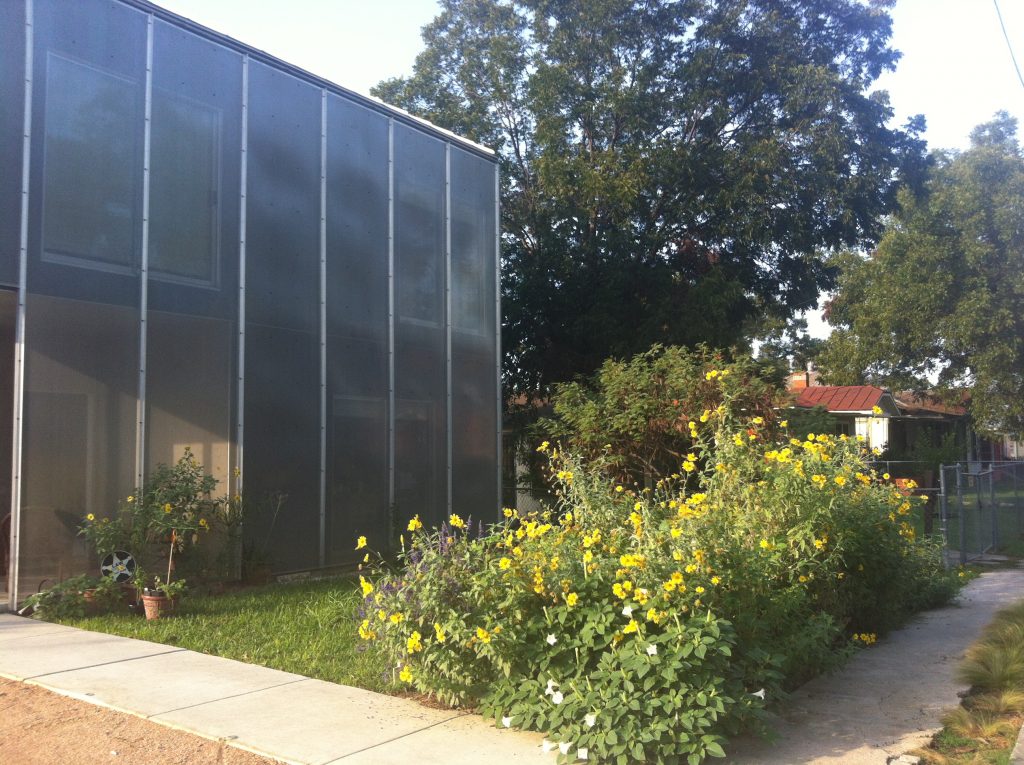
San Antonio butterfly garden, October 2012. Photo by Monika Maeckle
it upon himself to mow down my Daisy patch and reinstall St. Augustine. The same attitude removed a well established pollinator patch from our former family home in Alamo Heights. When we turned over the keys, the new owners ripped out all the shrubs and natives and returned the lawn to water guzzling grass.

San Antonio butterfly garden, November 2012. Some Cowpen Daisies are spent–good time to gather seeds for next year. Photo by Monika Maeckle
It’s a fact: nature is messy. Sometimes pollinator gardens are not that pretty. Seedpods form and dry, become brittle, and hang on the plant, reminding us of better days. Dead vines and stalks may look raggedy and unsightly, yet they provide shelter and protection for all kinds of creatures. Just remember that the pay-off for such temporary imperfection is a new round of beauty in seasons to come.
Related posts:
- Mostly native butterfly garden outperforms lawn every time
- A year in the life of an urban butterfly garden
- Downtown River walk plot converts to pollinator garden, creature haven
- Converting your Lawn to a Butterfly Garden
- San Antonio becomes first National Wildlife Federation Monarch Champion city
- Late season Monarchs create gardening quandary
- What to do with late season Monarchs
- Tropical Milkweed: To Plant it or Not is No Simple Question
- How to raise Eastern Swallowtails
- How to raise Monarch butterflies at home
Like what you’re reading? Don’t miss a single post from the Texas Butterfly Ranch. Sign up for email delivery, like us on Facebook, or follow us on Twitter, @monikam.

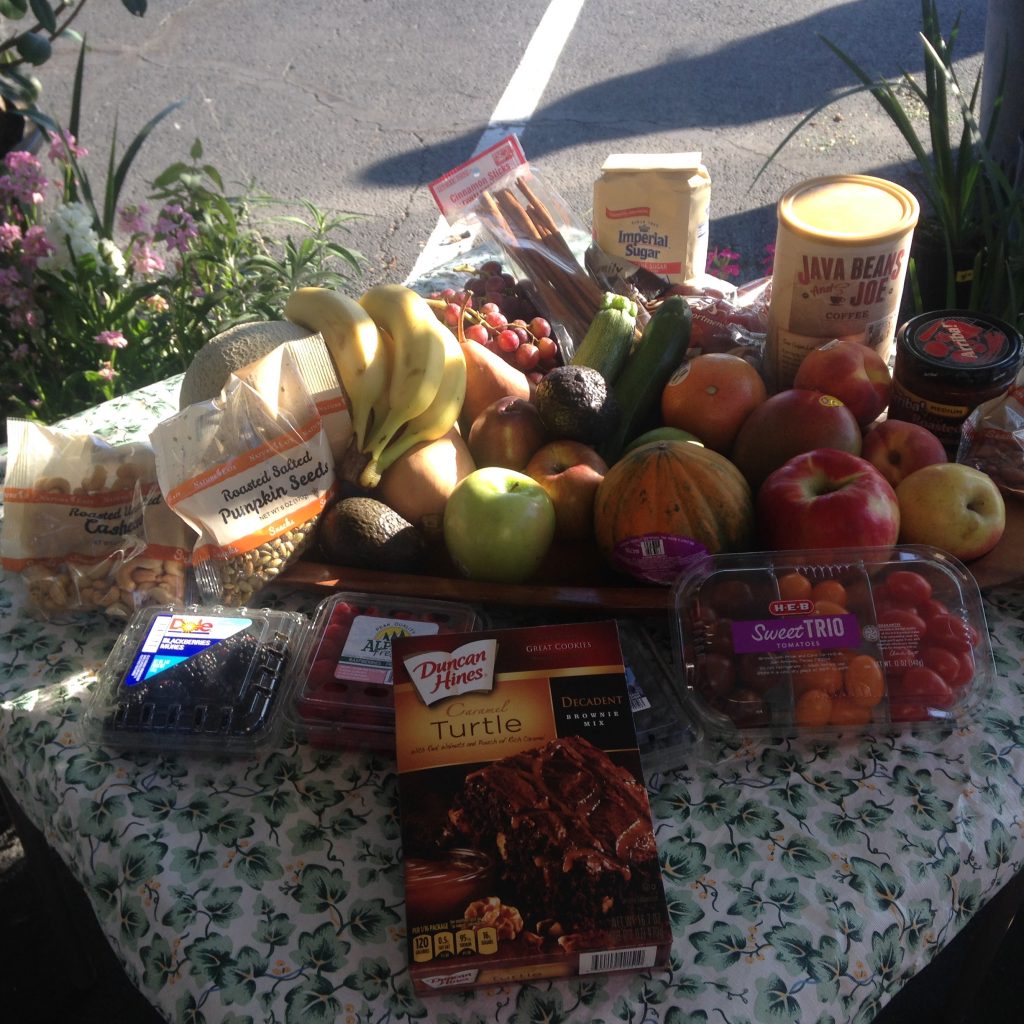
Fantastic, Monika! Thank you for this excellent info!
Thanks, Monika, great article.
I have planted quite a few in my backyard but never get visited by butterflies. Bees yes – I have seen them around at least. Does it take a while?. My neighborhood is suburban and yes they have grass back yards and front yards too.
I have sages, agastaches, Lantana, Buttercups, Turks caps, Cardinal flowers and Ms Manners to name a few. Have a few Yarrows too. Will the butterflies come only for Milkweed. I seem to have bad luck growing milkweed 🙁
Thanks for your help
Yes, you have to have milkweed. I too had a variety of flowers. And yep, the bees and the birds visited. Then I planted a milkweed and within a few days the monarch butterflies arrived. Since then, I have greatly expanded my butterfly knowledge, and I now have most of my milkweed in containers, near the house – so I can keep an eye on things! I have also learned that the male butterflies are territorial and literally patrol their area. So I have several different clusters of milkweed to create more territories.
No, you don’t have to have milkweed but you do want to have host plants for a variety of butterflies. Milkweed will only attract Monarchs and Queens. These host plants are my “must haves” and bring in butterflies quickly and easily:
Incense Passion Vine – Gulf Fritillary, Fennel, dill or parsley – Eastern Black Swallowtail, Citrus trees & rue – Giant Swallowtails.
I’m looking forward to trying:
Flame Acanthus – Crimson Patch Butterfly
Frog Fruit – Common Buckeye
Candlestick – Cloudless Sulphur
Good luck!
You’ve inspired me to add more pollinators to my sculpture garden and given me the step-by- step instructions.
I’m a 1st time butterfly gardener. I started several milkweeds from seed this winter, successfully. Planted some in mid-March and within a week have 6 caterpillars that have devoured the small plants – I have more seedlings ready to plant. How long do they feed? How many plants should I prepare to have in the garden? Once stripped, do the plants have any chance of recovery? Do I need to protect the caterpillars from predators? Thanks for any advice.
Oh shucks. In my experience, one caterpillar will eat about 20 full-size leaves during their process. This process varies, depending on the weather. Ten days in warmer weather, two weeks in average weather. Longer in cooler weather. The tiny ones don’t eat much at all but the 5th instars eat about 5 good-size leaves per day when the weather is warm. I suggest you try to find a good nursery with milkweed in stock to supplement what you have.
Steve in Texas brings up a good point. It is hard to stay supplied with milkweed, especially when it is younger. The cats zip through the small leaves really quick.
For myself, mostly I have purchased full-size milkweeds at the nursery and let nature take its course. Some of the eggs get eaten by spiders, some of the smaller caterpillars get eaten by birds. The caterpillars that are left devour the plant. (I don’t know if the seedlings will grow back. The larger plants do grow back. I trim each back like a rose bush – strip off all leaves, cut back the twiggy branches. Wash it off really well. I fertilize with worm castings. They are not as resilient as roses, and they don’t all carryover to following years. Nor perhaps does one want them to, as there are concerns about OE virus.)
To continue my story, when I discovered that many of the larger caterpillars were getting devoured by the tachinid fly larva, I started putting them into enclosures to protect them. And kept buying more milkweed! One time I had the -I thought- brilliant idea of stocking up on the milkweed in advance. But, by the time I needed it, there were lots – and lots – of eggs on them. As soon as I put them in the protected enclosure, with no birds or spiders, they went wild. That was an experience to remember! My sweet husband ended up building a bunch more enclosures, and we farmed them out to friends and neighbors to care for.
This is the first year I have started milkweed from seed. I have put the seedlings in a mini-greenhouse so the butterflies cannot lay eggs on them. Learning from my previous experience, I also have stocked up on regular-sized plants which are in this enclosure. It’s about 4’ x 8’ and about 4’ tall.
What can I say, everything is a learning opportunity! Best of luck to everyone with their butterflies.💕
I have seen several Monarch cats that look like they’ve melted, if that makes sense! What predator does that to them? I’ve seen a wasp hanging around recently, and am wondering if that’s the culprit. Any suggestions on how to keep the cats protected outside?
[…] Texas Butterfly Ranch covers all the bases on how to plan a successful butterfly and pollinator garden, plus all sorts of other butterfly related topics, including the question of tropical milkweed. The […]
Great article! I love how you emphasize the importance of creating a butterfly and pollinator garden not just for aesthetics, but for the vital role these creatures play in our ecosystem. The tips on using native plants and choosing the right host plants are particularly helpful. It’s inspiring to see how small, individual efforts can contribute to restoring pollinator habitats, especially in light of their declining populations.
The reminder to avoid pesticides is crucial, as is the need to embrace the natural messiness of a pollinator garden. It’s a reminder that nature thrives in diversity and imperfection. Your insights on creating microhabitats, like puddling zones and windbreaks, offer practical solutions for attracting a variety of species.
Overall, this article is a wonderful resource for both novice and experienced gardeners looking to make a positive impact. Thank you for sharing such valuable information!